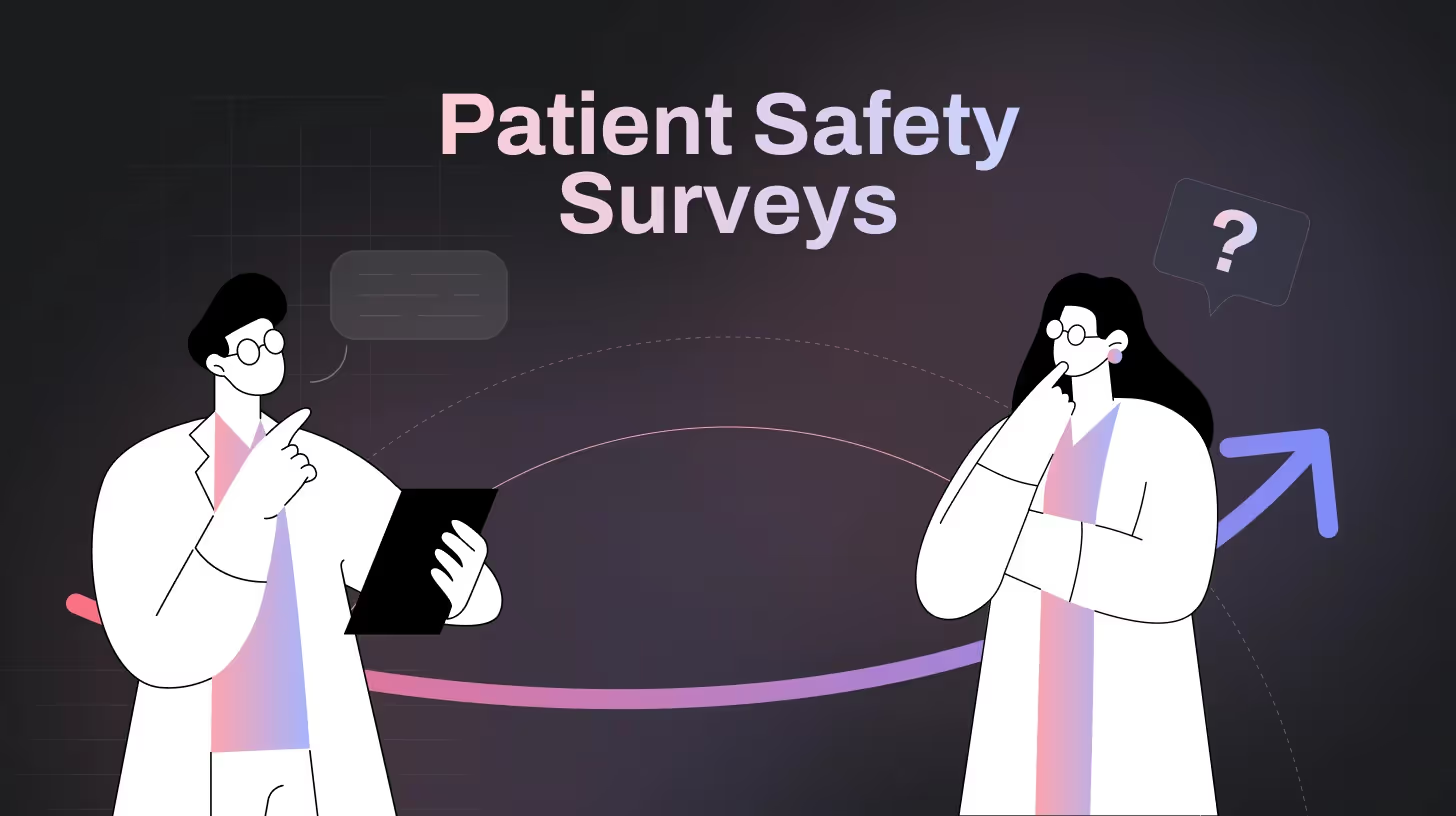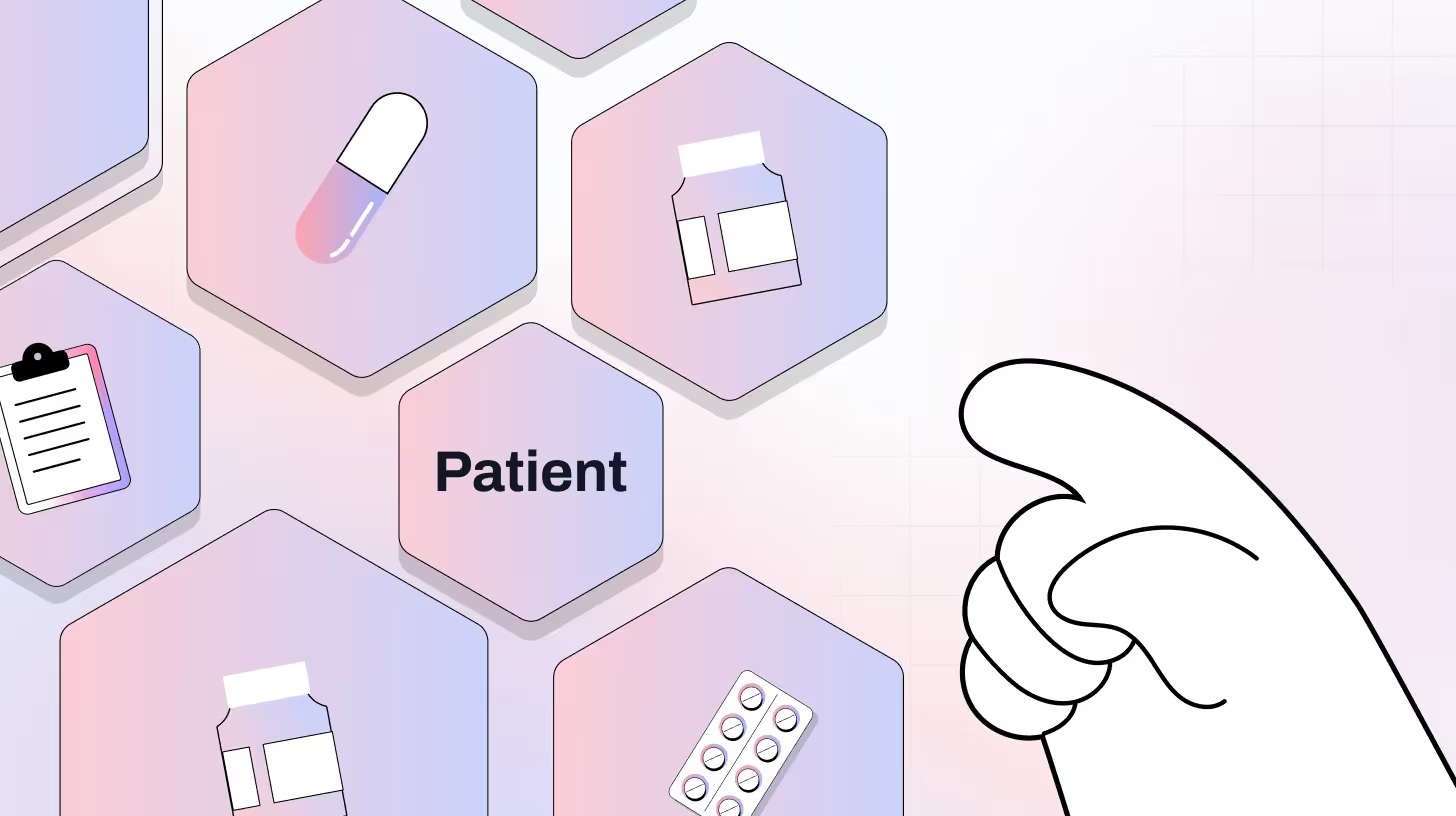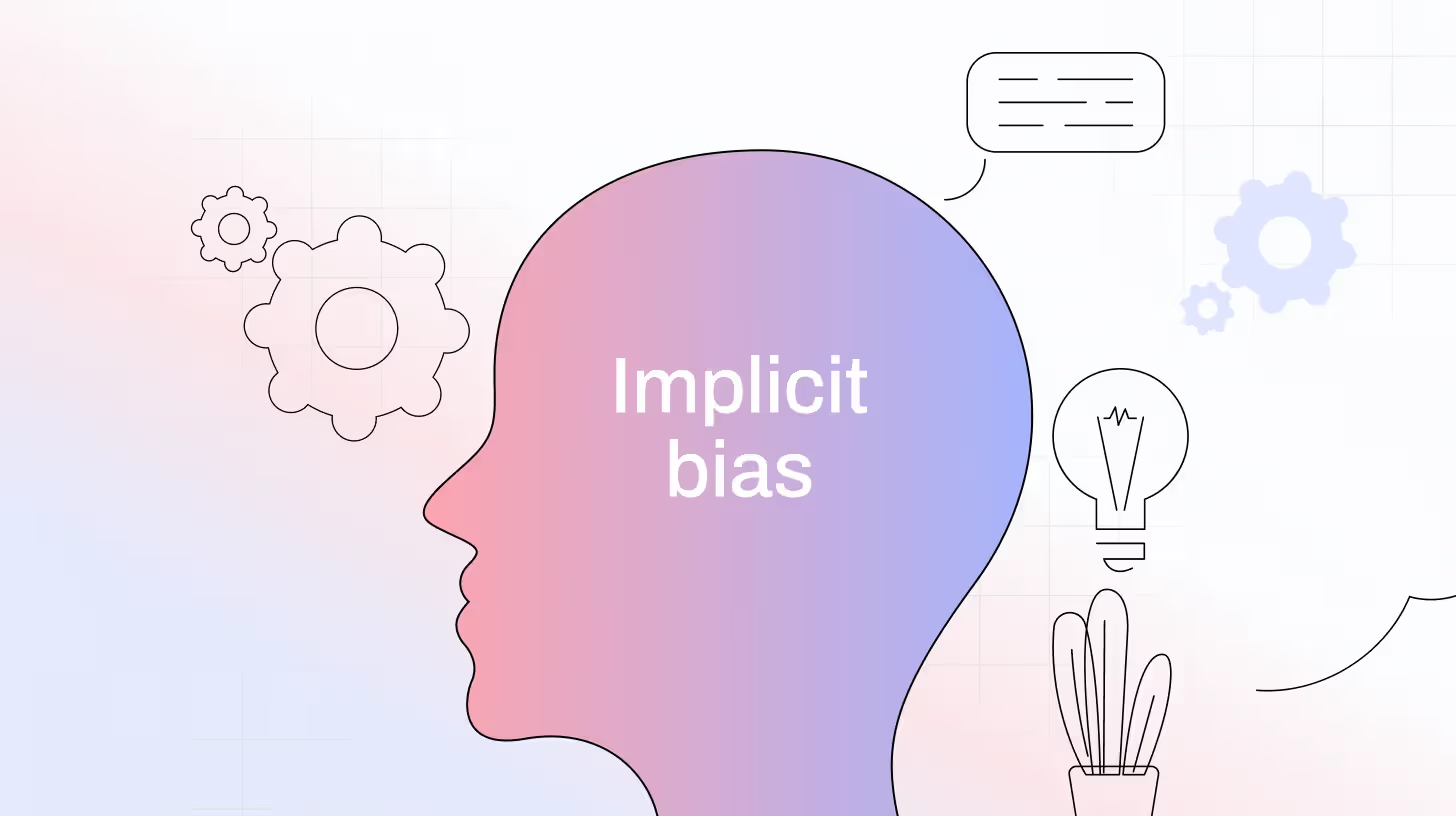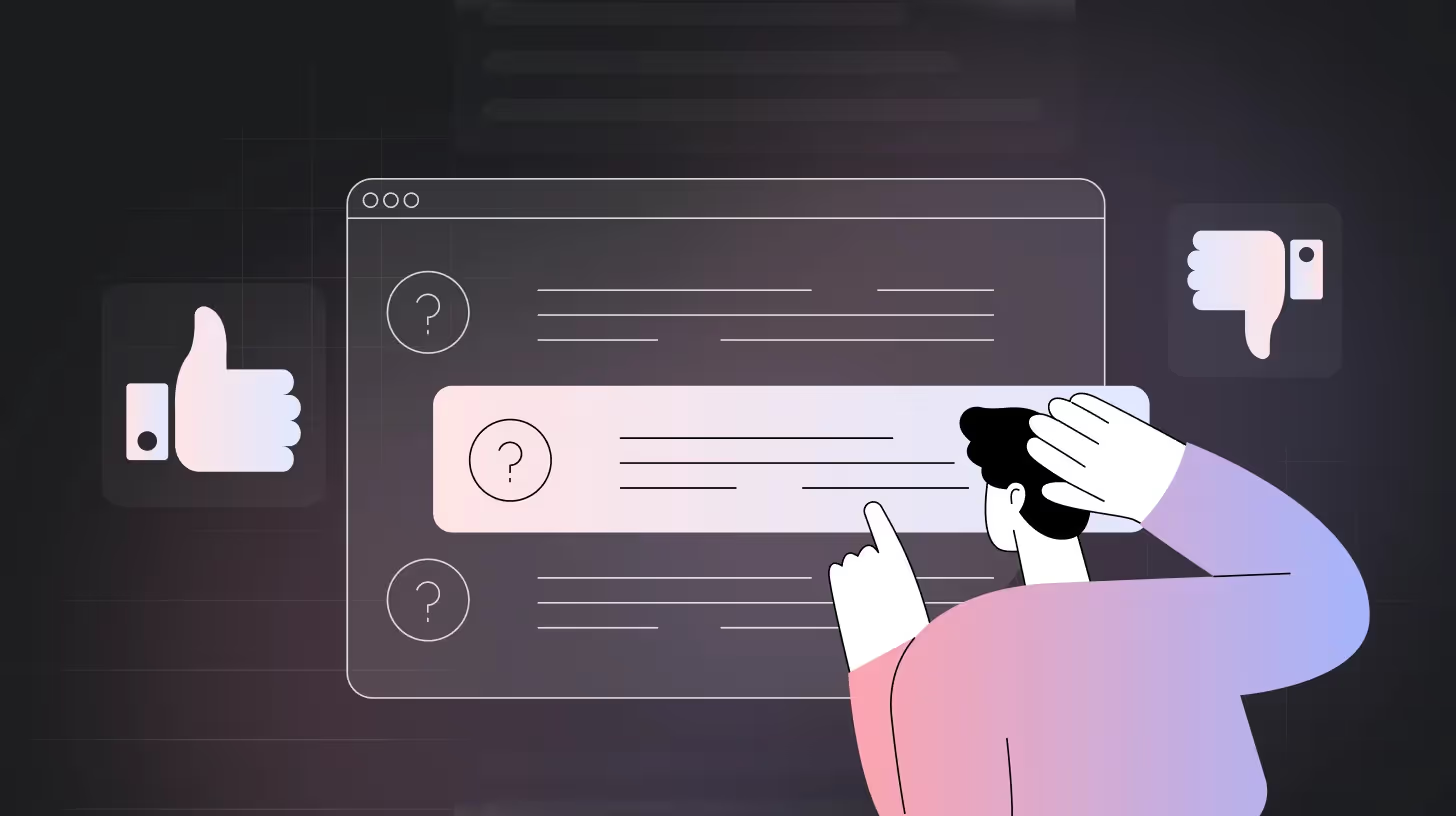Everything You Need to Know About Healthcare Surveys

According to a 2024 HealthTech Insights report, 84% of healthcare leaders say survey data directly influences their strategic decisions.
Healthcare surveys are the most effective way to gather real-time insights about how patients feel about their care and how staff experience their workplace. Done right, they can uncover blind spots, boost satisfaction, and spark meaningful improvements across your entire organization.
Whether you’re focused on improving patient outcomes, enhancing staff engagement, or refining operational processes, healthcare surveys give you the data you need to take action.
Here’s everything you need to know about using surveys to drive better care, from patient satisfaction to employee well-being.
What is a healthcare survey?
A healthcare survey is a structured method of collecting feedback from patients, caregivers, healthcare professionals, or administrative staff. These surveys are designed to measure experiences, satisfaction, quality of care, workplace environment, and more.
Healthcare surveys can range from a simple patient satisfaction questionnaire to a detailed clinical trial feedback form. They’re used across hospitals, clinics, private practices, telehealth platforms, and health tech apps to gather insights that improve services and outcomes.
By asking the right questions at the right time, healthcare providers can identify pain points, build trust, and continuously evolve their services based on real data, not guesswork.
Common Objectives of Healthcare Surveys
- Measure patient satisfaction and experience
- Identify gaps in care delivery
- Track health outcomes post-treatment
- Evaluate staff performance and morale
- Inform the hospital administration and policy-making
Why Healthcare Surveys Are Essential for Modern Healthcare Providers
The way we deliver and experience healthcare has changed, especially after the pandemic. Today, patient expectations are higher, staff burnout is a real concern, and trust in care matters more than ever.
By asking patients how they felt during a visit or checking in with staff about their workload, you can uncover insights that drive real improvements. Whether it's streamlining the check-in process or improving communication between departments, small changes can lead to better outcomes for everyone.
And the data backs it up:
- 84% of healthcare professionals say understanding the patient experience is more important now than before COVID-19.
- Over half of patients admit that a word-of-mouth referral can shape how they view a healthcare provider.
- 28% of healthcare executives report they're gathering patient feedback more often to improve services.
When you listen to patients and employees and take action based on their feedback, you don’t just improve operations. You build loyalty, reduce churn, and deliver more compassionate care. In a space where every detail counts, healthcare surveys give you the clarity to do better.
Types of Healthcare Surveys (With Question Examples)
There are various types of healthcare surveys that you can use to enhance your organization. Here’s a list of the most common ones to choose from and questions you can ask in surveys according to your objectives.
Patient Satisfaction Surveys
The best way to understand your patients is to ask them directly about their experience. Patient satisfaction surveys help you understand how patients truly feel about the care they receive and their interactions with your employees, from the front desk to follow-up.
Patient satisfaction survey Questions:
- How satisfied were you with your visit today?
- Did your provider listen to your concerns?
- Would you recommend our facility to others?
Healthcare Employee Engagement Surveys
Happy employees create better patient experiences. It’s that simple.
In healthcare, where pressure runs high and burnout is real, understanding how your staff feels at work is critical not just for retention, but for the quality of care your patients receive.
Engaged healthcare employees are more likely to go the extra mile for patients, stay longer with your organization, and contribute to a more positive, collaborative culture. On the flip side, disengagement can quietly drain your resources, reputation, and results.
Examples of questions:
- On a scale of 1–10, how satisfied are you with your current role?
- Do you feel recognized for your work by your supervisor or peers?
- How manageable is your workload on a typical day?
- Do you feel comfortable voicing concerns or feedback to leadership?
Telehealth Experience Surveys
As virtual care becomes more common, it’s important to measure how patients perceive remote visits. These surveys help improve the quality of digital interactions and tech usability. They typically measure ease of use, video/audio quality, provider communication, and satisfaction with virtual care.
Example questions:
- Was it easy to join your virtual appointment?
- Did your provider make you feel comfortable and heard?
- Would you use our telehealth services again?
Paid Healthcare Surveys
These surveys reward participants, patients, clinicians, or administrators for sharing their opinions. They're especially popular in pharmaceutical research, health tech development, and user experience testing. A healthcare startup building a new medication reminder app offers a paid survey to 200 diabetic patients to understand their challenges with medication adherence. People are more likely to give thoughtful, in-depth answers when there’s an incentive. Just keep it ethical.
Example Questions:
- What frustrates you the most about managing your condition?
- Would you use an app that reminds you to take your medication?
Healthcare Access Surveys
These surveys reveal the real-world barriers patients encounter when attempting to access care—whether it is cost, transportation, digital access, or wait times. A community health center surveys patients to find out why appointment no-shows are increasing. It turns out that 40% didn’t have access to reliable transportation.
Example Questions:
- How far did you travel to reach us?
- Have you delayed care due to cost?
Healthcare Burnout Surveys
These surveys are used to understand how overworked, under-resourced, or unsupported healthcare professionals feel, especially nurses, ER doctors, and frontline staff. An extensive hospital system utilizes monthly burnout surveys to monitor staff well-being and identify early signs of potential mass resignations.
Example Questions:
- Do you feel emotionally exhausted at the end of most shifts?
- Do you have the tools and support you need to do your job?
Medicare Healthcare Surveys
Surveys like CAHPS (Consumer Assessment of Healthcare Providers and Systems) are federally required to assess the experiences of Medicare beneficiaries. A Medicare Advantage plan reviews its CAHPS survey data to improve specialist availability after poor feedback on appointment delays. These surveys give you clear, comparable benchmarks—and the opportunity to proactively improve outcomes before CMS steps in.
Example Questions:
- How often did your provider explain things in a way that was easy to understand?
- Were you able to get the care you needed without delay?
Health Risk Assessment (HRA) Surveys
Often used during annual check-ups or wellness programs, HRA surveys help identify individual risk factors, such as lifestyle habits or family history, so care teams can personalize treatment and prevention strategies.
Example questions:
- How often do you engage in physical activity each week?
- Do you have a family history of diabetes or heart disease?
- Have you had a preventive screening in the last 12 months?

Mental Health Screening Surveys
These surveys are designed to screen individuals for signs of anxiety, depression, PTSD, substance use, and other mental health challenges. They help identify risks early—before they escalate. A university health clinic implements a mental health screening survey for students during orientation week. Those at risk are guided to counselors within 48 hours.
Example Questions:
- Over the past two weeks, how often have you felt hopeless or down?
- Have you experienced a loss of interest in things you usually enjoy?
- Would you be open to speaking with a mental health professional?
Key Metrics Measured Across Healthcare Surveys
How to Design Effective Healthcare Surveys for Better Patient Insights
When done right, a healthcare survey can deliver a goldmine of insight, helping you improve patient experience, reduce friction, and even meet compliance goals.
Here’s how to design surveys that don’t just collect data but actually make a difference.
Start with Why: What’s Your Goal?
Before anything else, ask yourself: What do I want to learn from this survey? Are you trying to measure overall patient satisfaction? Find out if people felt heard during their last appointment. Or maybe you’re checking in after a hospital stay? Your goals shape everything, your questions, format, and even how you’ll share the survey.
Use the Right Feedback Tool (Make It Easy on Yourself)
Manually building a healthcare survey from scratch is a pain. That’s why smart teams use survey platforms with ready-made templates designed for clinics, hospitals, and private practices. Tools like TheySaid help you create your survey within 60 seconds. All you have to do is share your goals with it, and AI does the rest.
Pick the Survey Type That Fits
Not every healthcare survey is the same. Match your survey format to your goals: Choosing the right type ensures you get the most accurate and actionable insights.
- Ask Questions That Make Sense (And Sound Human)
- Write healthcare survey questions like you’re talking to a real person.
- Avoid confusing language or too much medical jargon.
- Keep it simple, short, and specific.
Good question examples:
- How would you rate the cleanliness of the facility?
- Did your provider explain things in a way that was easy to understand?
- Is there anything we could’ve done better during your visit?
Use a healthy mix of:
- Multiple choice for easy analysis
- Likert scales (like 1 to 5 ratings) for measuring satisfaction
- Open-ended questions to let patients tell their story
Make It Feel Like a Conversation (Not an Interrogation)
Use skip logic and question branching so patients only see questions relevant to them. If someone didn’t stay overnight, why ask about the discharge process? This makes the survey feel natural and thoughtful, not robotic.
Tip: Interactive, conversational surveys tend to get better completion rates and more honest responses.
Respect Privacy and Build Trust
Let patients know their answers are confidential. When people feel safe, they open up.
Always explain:
- Why you’re collecting this data
- How it’ll be used to improve care
- That their identity will stay protected
Include trust-building phrases like “anonymous,” “secure,” and “your privacy matters” in your survey intro.
Test It Before You Launch It
Don’t skip this step. Run a quick pilot test with a small group, such as a few patients or internal staff. You’ll quickly spot confusing questions, tech glitches, or layout issues. Once you’ve fine-tuned everything, you’re ready to roll.
Best Practices for Conducting Healthcare Surveys
Below are the best practices to help you design and run healthcare surveys that are effective, respectful, and insightful without overwhelming your patients or risking compliance.
Always Ensure Your Healthcare Surveys Are HIPAA-Compliant
This is non-negotiable. When dealing with patient data, HIPAA compliance must be baked into your process from the start.
A truly HIPAA-compliant survey will:
- Prevent unauthorized access to patient data
- Operate under a valid Business Associate Agreement (BAA)
- Use encryption and secure data handling protocols
- Log access and activity for compliance reporting
Keep It Short, Focused, and Patient-Friendly
Healthcare professionals are busy. So are patients. If your survey takes more than a few minutes, chances are it won’t get finished. Tell patients up front: “This will only take 2 minutes.” That small line significantly boosts completion rates.
Use the Right Distribution Channels
Even the best survey falls flat if it never reaches your audience. Choose channels your patients already use, don’t make them chase it down.
- Email is still one of the most effective ways to reach patients, especially if you already use it for appointment reminders or care updates.
- Patient portals and post-visit follow-ups are great spots to include short surveys.
- Avoid social platforms like X (formerly Twitter) unless you’re running a public health poll, not collecting sensitive feedback.
Also, make sure your healthcare survey platform supports:
- Mobile optimization
- Multi-language options
- Automated follow-up reminders
That’s how you increase survey response rates without extra effort.
Use Adaptive Question Logic (Smart Survey Flow)
Use branching logic so that the next question depends on the respondent’s previous answer.
Example: If a patient says they had a poor experience, follow up with: “What made the experience disappointing?”
Keeps the survey relevant and avoids asking unnecessary questions, improving data quality and user experience.
Include Open-Ended Voice or Video Responses
For tech-savvy or younger audiences, allow optional voice notes or video feedback. “If you'd like, you can leave a short voice message about your experience.” It adds emotional depth and rich qualitative data that text often misses.

Create Smarter Healthcare Surveys with TheySaid
Creating a healthcare survey has never been this easy. Just define your goal or paste your website URL, and TheySaid’s AI will instantly generate a smart, ready-to-use survey tailored to your needs. You can fine-tune questions, apply logic branching to personalize each respondent’s journey, and embed it seamlessly anywhere—on your site, in email, or in your patient portal.
But TheySaid does more than collect answers; it starts real conversations. Our AI digs deeper to uncover the why behind every response, giving you rich, contextual insights you can actually act on. Whether you're looking to improve patient satisfaction, refine services, or uncover unmet needs, TheySaid turns raw feedback into meaningful direction—in minutes.
Ready to Ask Smarter Questions? Build Your Survey Now!
FAQs
How often should I send healthcare surveys to patients or staff?
The ideal frequency depends on your goal and audience:
- For patients, it's best to send surveys shortly after an appointment, procedure, or discharge—ideally within 24–48 hours. This ensures the experience is still fresh and responses are more accurate.
- For staff, consider running monthly or quarterly engagement and burnout surveys. This helps monitor trends, identify early warning signs, and show your team that their feedback is valued consistently.
What are the most common types of healthcare surveys?
The most common types include:
- Patient satisfaction surveys
- Staff engagement surveys
- Telehealth experience surveys
- Health risk assessments
Are healthcare surveys required to be HIPAA-compliant?
Yes. If you’re collecting patient-identifiable information, your surveys must comply with HIPAA regulations. Use a secure survey platform that offers encryption, access control, and a signed Business Associate Agreement (BAA).





.webp)









.svg)